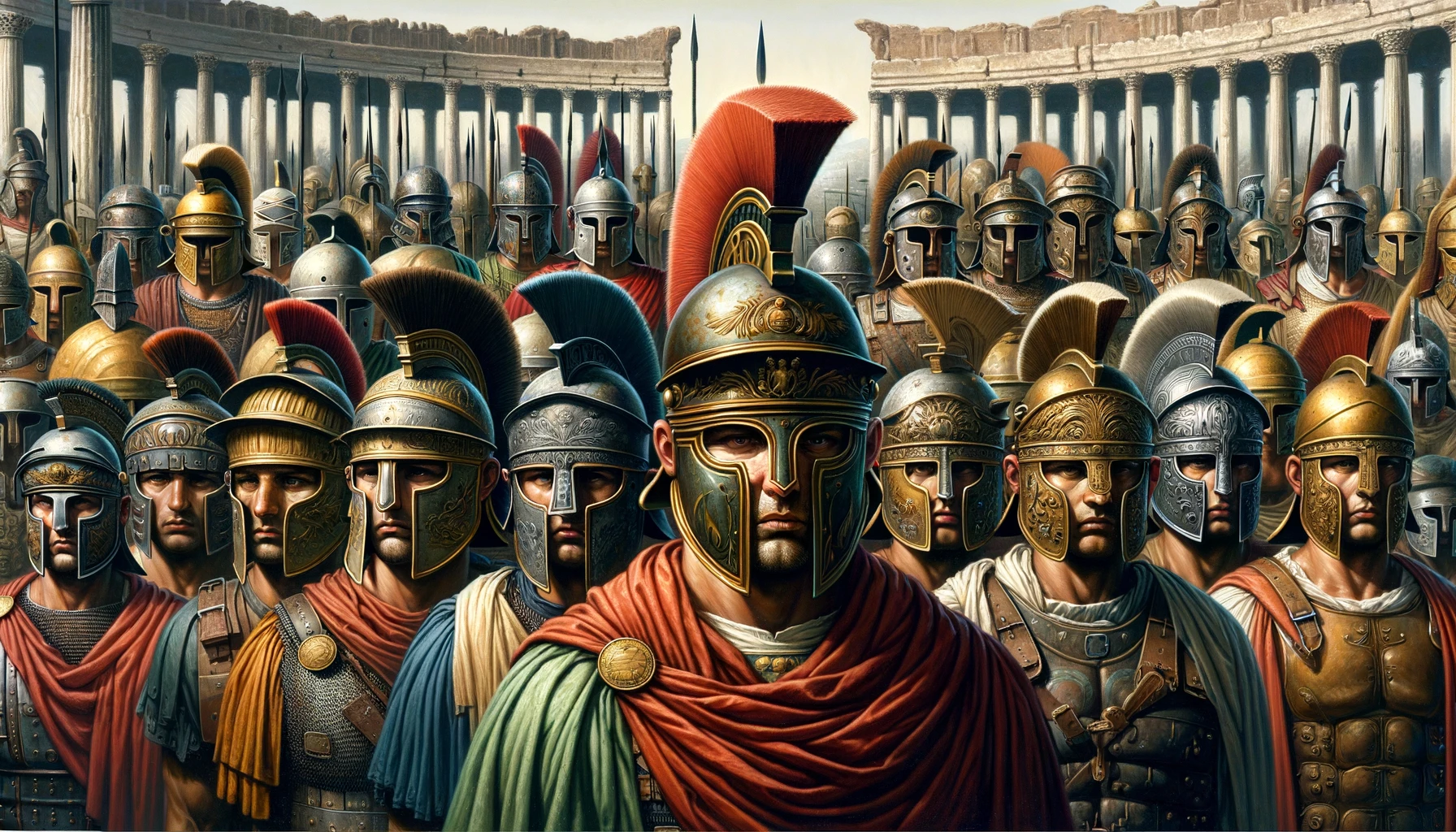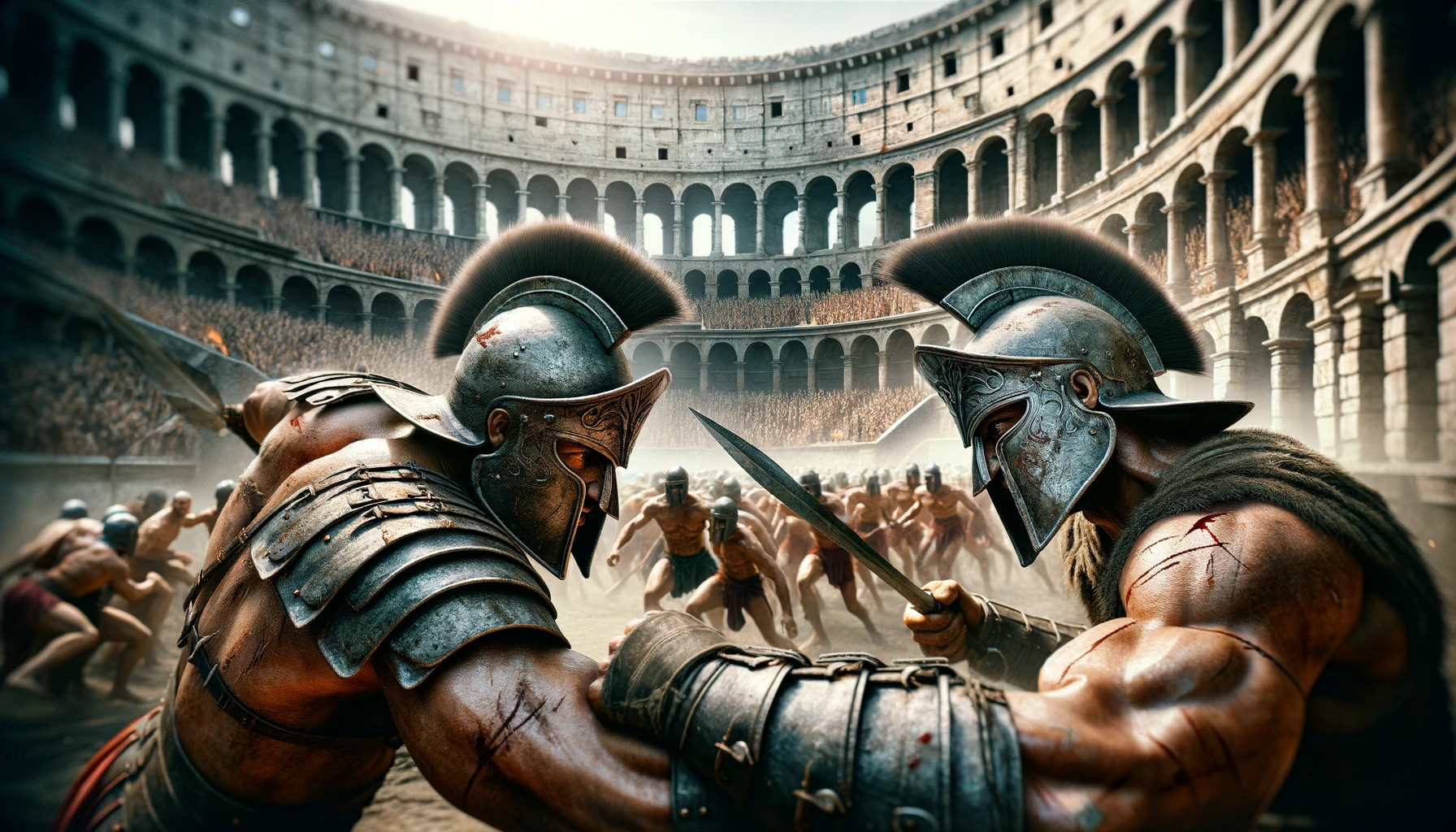Roman helmets
Roman helmet Auxiliary Infantry Heddernheim, steel and brass
The History and Evolution of Roman Helmets
Roman helmets are emblematic in military history, representing not only the protection of the fighter but also the distinction of rank and position. From the earliest models used by the legions, helmets evolved in design and functionality as warfare tactics changed and conflicts spread across Europe, Asia, and Africa.
Each Roman helmet features specific characteristics that reflect its time and the type of combat for which it was intended. Some would be more ornate than others, indicating the status of the wearer, while others prioritized functionality and protection. It is fascinating how each design tells a story about the society and lifestyle of ancient Romans.
Materials Used in the Manufacture of Roman Helmets
The materials used in the manufacture of Roman helmets varied considerably, influencing their durability, weight, and appearance. Originally, helmets were made of bronze, iron, and in some cases, combinations of metals, providing notable resistance and protection.
Over the centuries, less expensive materials began to be used for helmet production, allowing more soldiers access to these vital elements on the battlefield. This democratization of armor reflects how technology and the economy have impacted military development throughout history.
The Different Types of Roman Helmets and Their Uses
Roman helmets are classified into various categories based on their design and purpose. Centurion helmets, for example, were elaborate and adorned with plumes, used by commanders to represent their authority on the battlefield. On the other hand, infantry helmets were more functional and less ornate, granting greater mobility to the soldier.
In addition to aesthetics and use in combat, the various types of helmets also symbolized specific ranks and roles within the Roman army. The distinctive shape and design of each helmet facilitated identification, even in the chaos of battle, being a fundamental part of military hierarchy.
Care and Maintenance of Roman Helmets
The maintenance of Roman helmets is essential, especially if they are collectible items or replicas. Proper cleaning and storage help preserve their shape and material, preventing corrosion and deterioration. It is recommended to use specific metal products and careful cleaning to maintain their original appearance.
It is also important to avoid exposure to extreme conditions, such as humidity and direct sunlight, which can affect the integrity of the helmet. With proper care, these helmets can last generations and be admired not only for their historical significance but also as works of art in their own right.
The Passion for Historical Recreation and Roman Helmets
Historical recreation has gained great popularity in recent years, allowing enthusiasts of Roman history to better understand what life was like in ancient Rome. Roman helmets have become a key element in these recreations, as they provide authenticity to costumes and representations of historical battles.
Participating in historical events and fairs offers enthusiasts the opportunity to interact with others interested in military history, and Roman helmets are an unmistakable symbol of the courage and strategic skill of the Roman army. This passion for history not only educates but also connects people across time.
What material are Roman helmets made of?
Roman helmets were primarily made of bronze and iron but also included combinations of metals to increase durability and resistance. The more elaborate helmets could feature details in gold or silver, while the simpler versions were created with steel or alloys to provide an accessible option for more soldiers.
What are the different functions of Roman helmets?Roman helmets served various functions, including the protection of the head in combat, differentiation of rank, and often served as a symbol of the wearer's status. Additionally, some helmets were designed for specific situations, such as infantry or cavalry use, adapting to the soldier's needs on the battlefield.
Where can I buy replicas of Roman helmets?If you are looking for replicas of Roman helmets, you can find them in our online store, where we offer a variety of styles and materials. From centurion helmets to models for historical recreation, our options are designed to satisfy both collectors and enthusiasts of military history.
Are Roman helmets comfortable for recreational use?Despite their robust design, modern Roman helmets are built with user comfort in mind. Many of them are made with internal padding and adjustments that allow for a better fit to the head, making them suitable for long hours of use during events or historical recreations.
What role do Roman helmets play in historical recreation?In historical recreation, Roman helmets are vital for the authenticity of representations. They are not only a centerpiece of the outfit but also help recreators better understand the experiences of Roman soldiers, making history tangible and exciting for the audience and participants.
What is the manufacturing process of a Roman helmet?The manufacturing of a Roman helmet involves traditional metalworking processes such as molding and forging. Expert craftsmen use techniques that have been passed down from generation to generation, ensuring that each helmet is not only visually appealing but also possesses the strength that its historical counterparts exhibited on the battlefield.
What care should I take when maintaining a Roman helmet?To keep a Roman helmet in optimal condition, it is recommended to clean it regularly with specific metal products to prevent corrosion. Additionally, it is crucial to store it in a dry, cool place, away from direct sunlight. These steps ensure that the helmet retains its structural and aesthetic integrity over time.
Explore our exclusive collection of Roman helmets and immerse yourself in the rich history of ancient Rome. Each helmet is a window to the past and a unique piece for your recreations. Visit us and find the perfect helmet for you!














































































































































